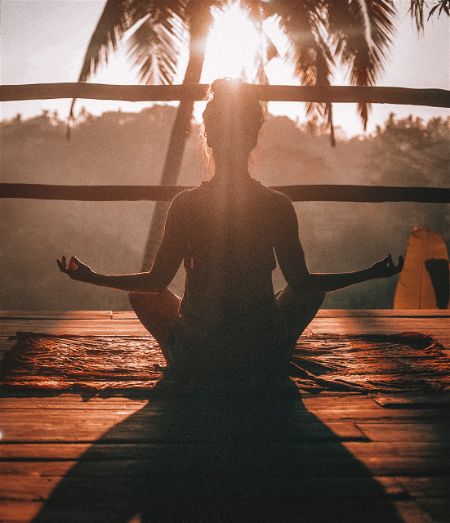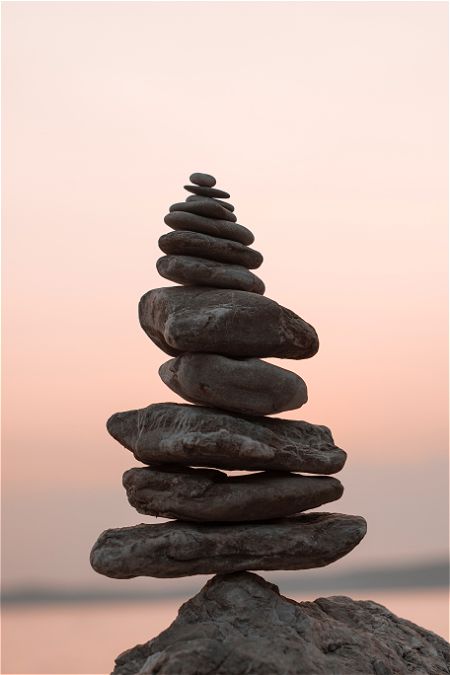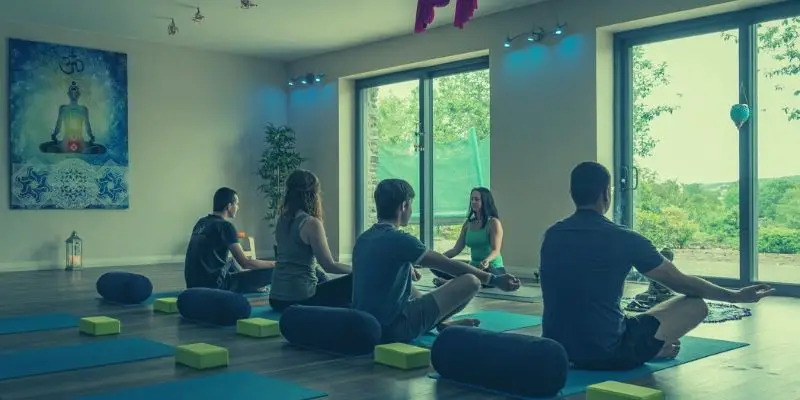There are many paths to meditation. Some meditate to find calm and serenity. Others seek enlightenment. Some meditate for cognitive health, while others search for insight. Meditation is both extremely easy and quite challenging. All you have to do is sit there and concentrate on the breath.
Easier said than done. Distractions abound, both inside your head and outside!
For this reason, it’s a good idea to try to stack the deck in your favor by trying to get yourself in the optimal situation for successful, worthwhile meditation.
This article will explore more behind the art of meditation, and cover some tips to make the meditation session more effective. We’ll consider some best practices, comfort suggestions, the best time to meditate, and how to build the meditation habit.

The Benefits of Meditating
There are plenty of studies that suggest meditation will improve this, cure that, make you more attractive and cut your lawn. Most of these studies are well-intentioned but preliminary. And they’re not the reason most people should be meditating.
Most meditators find the practice to be rewarding, and they find that they are better people due to their meditation practice.
Many of us find that meditation helps us not only think better, but think better. Of course, there are plenty of other benefits to taking up a meditation practice
It Can Reduce Stress and Anxiety
Many people often suffer from severe stress or anxiety. Meditation is a natural method designed to help reduce stress and anxiety in the body as it can stop increased levels of cortisol (a stress hormone). Meditation also works to prevent tension in your body which can make you feel stiff and even contribute to high blood pressure.
This is because it helps you control your breathing and sometimes incorporates yoga movements that can relax tight muscles.
It Can Help You to Be More Positive

Another benefit of meditating is that it encourages you to take a holistic view of your life, and of those around you. This often translates into a positive outlook, which is very refreshing.
In fact, many studies have shown that meditation has helped those who suffer with depression to have a better outlook on life. The studies imply that meditation is supposed to help decrease the formation of cytokines which are an inflammatory chemical that can lead to depression.
However, if you’re meditating with the goal of decreasing your cytokines, you’ve got the wrong idea.
It Can Prevent Memory Loss
Meditation seems to help prevent memory loss. This is because it works to clear your mind therefore reducing stress. Sometimes repetitive movements during meditation also help to keep your brain active, something which has been shown to help older people with their memory. In fact, because of this, it could be a way to help fight against dementia.
It Can Improve Your Sleep
Meditation is designed to help keep your body relaxed. Because of this, it can encourage you to have a better night’s sleep. This is believed to be due to meditation relaxing your brain and reducing tense muscles.
Meditation has often been used as a natural method to help combat insomnia because of its relaxation benefits.
How Long to Meditate
For most daily meditation practices, Meditation sessions can last anywhere from 10 minutes to an hour. Ideally, you should work to meditate at least 5-10 minutes a day. Over time, you can see if you should increase this amount a few minutes longer depending on your needs.
If you head to a retreat, you may spend days, or even weeks, in silent meditation. Many find these retreats extremely rewarding, though they can be hard to fit into a busy western schedule!
In his book The Mind Illuminated, perhaps the best instruction guide to meditation, John Yates Ph.D. recommends two sits per day of 30-45 minutes to make progress in your meditation practice.

The Best Time to Meditate
Meditation can be done at any time during the day. However, the morning tends to be the best time to meditate. This is because your mind is more refreshed and awake than later in the day.
It also can help you to have a more positive and calmer outlook for the day ahead. Because of this, you’ll be able to have a deeper meditation session in the morning.
It’s also often easiest to squeeze in time to meditate in the morning, if you plan around it. You might need to wake up a little bit early, but if you prioritize your meditation, you can often find quiet time in the morning, before the whirlwind of the day begins.
The Worst Time to Meditate
Many researchers point to one time during the day that you shouldn’t meditate which is right before you go to bed.
This is because your body will eventually think that your meditation session is you trying to sleep. This can end up causing a bit of a problem if you want to meditate during the morning or while at lunch because your body will start to feel tired. Many find that meditating too close to bedtime will just knock them out.
Now, for those who struggle with insomnia, this is gold! But for those of us who are seeking to meditate for other reasons, falling alseep doesn’t help.
In addition to mornings, many often point to times such as after work, during lunch, and whenever you might feel stressed as the best times to meditate. This will allow you to take a quick break from your surroundings and help you to ground yourself again.
How to Meditate in the Morning
There are a few ways you can help to ensure your morning meditation session is the best it can be.
Find a Calming Space

The first step is to find a calming space to meditate in. This could be outside in a garden or in a quiet room, or even in bed lying down. To help give you even more comfort, you can wear a meditation shawl to keep you warm, sit in a meditation chair, or use a meditation cushion for better support when sitting. You might even make a cup of tea to keep with you while you meditate.
Ideally a spot with partial sun and partial shade, and plenty of warmth, are what you’re looking for. The use of a beauitful backflow incense burner or essential oils can further improve the environment in the room.
Do Some Stretches
To help wake up your body before meditating, you can do some stretches. This includes pulling your knees to your chest, trying the butterfly stretch, or doing the cat and cow stretch. All of these work to help your back, legs, and spine become invigorated which can help you to meditate better.
Relax Your Body
You then want to relax your body. You can do this by taking deep breaths and slowly releasing any tension in your muscles.
Meditate

Once you complete these steps, you can start to meditate. Many find that starting their session with tingsha bells or the tone of a singing bowl will help solidify the meditation.
Make sure to focus on your breathing to help ensure your body stays relaxed. Depending on your preferences, you’ll either do this session for a few minutes or up to an hour.
By repeating these steps daily in the morning, you’ll find your morning meditation sessions will not only be easier to do, but help you to be more relaxed as well.
Conclusion
Meditation is a good practice to consider starting in your life if you’re looking for a way to help relax and reduce stress. While you can meditate any time during the day, one of the best times is during the morning. This is because your mind is generally clearer and you can use this time to prepare yourself for the day ahead.






